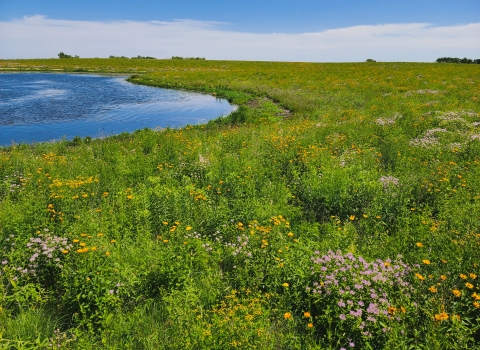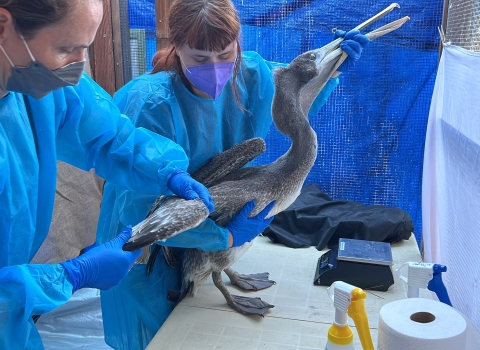DENVER – Today the U.S. Fish and Wildlife Service, in consultation with the Utah Division of Wildlife Resources (UDWR), counties and other partners, released a draft conservation plan that will aid the conservation of endangered Utah prairie dogs while benefiting economic productivity in the region and reducing undue regulatory burdens.
Utah prairie dogs are protected from those adverse impacts that constitute "take" under the Endangered Species Act, including unintentional take that may result from otherwise lawful activities. Industry and private individuals can apply for permits to allow them a limited amount of “incidental take” if they demonstrate they are taking appropriate steps to avoid or minimize take to the greatest extent practicable and mitigate for any unavoidable take. The incidental take permit process enables the Service to work collaboratively and proactively with private industry partners to further the conservation of endangered species while allowing important economic activity to continue.
The usual mechanism for providing such permits is a Habitat Conservation Plan (HCP), which is prepared by local developers or governments. The existing HCPs that cover Utah prairie dogs are expired or nearing expiration. The development of new county-wide or individual HCPs would take significant time, resources and money, which could hinder economic growth. The Service is instead proposing to issue permits under a General Conservation Plan (GCP), a streamlined process whereby the Service prepares the primary documents and issues permits to individual developers or master permit holders such as counties or cities. The GCP will be valid for a period of ten years.
The GCP incorporates elements of the UDWR Utah Prairie Dog Management Plan for Non-Federal Lands. Several partners would help implement the GCP, such as the UDWR, Service, Bureau of Land Management, U.S. Forest Service, and Iron, Garfield and Beaver counties.
As part of this GCP, the Service is proposing to issue a master permit to Iron, Garfield and Beaver counties for development projects. This would enable the counties to convey their master take authorization to developers in the county as the equivalent of sub-permittees through certificates of inclusion. Under the GCP, other counties and municipalities may also apply for master permits for their jurisdiction within the 10-year term of the GCP.
The prairie dog is subject to many environmental stressors, including habitat loss and the disease sylvatic plague. The GCP includes conservation measures to help combat these threats, including prairie dog translocations, habitat and plague management at translocation sites, and the protection of occupied Utah prairie dog habitats through conservation banks, conservation easements, and land acquisitions from willing sellers. These conservation measures are consistent with recovery objectives for the species.
Today’s announcement opens a 30-day comment period in the Federal Register, which closes on January 18, 2018. Instructions for providing comments on the GCP and the associated Environmental Assessment and Implementation Agreement documents are provided in the Federal Register notice of availability.
The mission of the U.S. Fish and Wildlife Service is working with others to conserve, protect, and enhance fish, wildlife, plants, and their habitats for the continuing benefit of the American people. We are both a leader and trusted partner in fish and wildlife conservation, known for our scientific excellence, stewardship of lands and natural resources, dedicated professionals, and commitment to public service.
Connect with our Facebook page at http://www.facebook.com/USFWSMountainPrairie, follow our tweets at http://twitter.com/USFWSMtnPrairie, watch our YouTube Channel at http://www.youtube.com/usfws and download photos from our Flickr page at http://www.flickr.com/photos/usfwsmtnprairie/.


